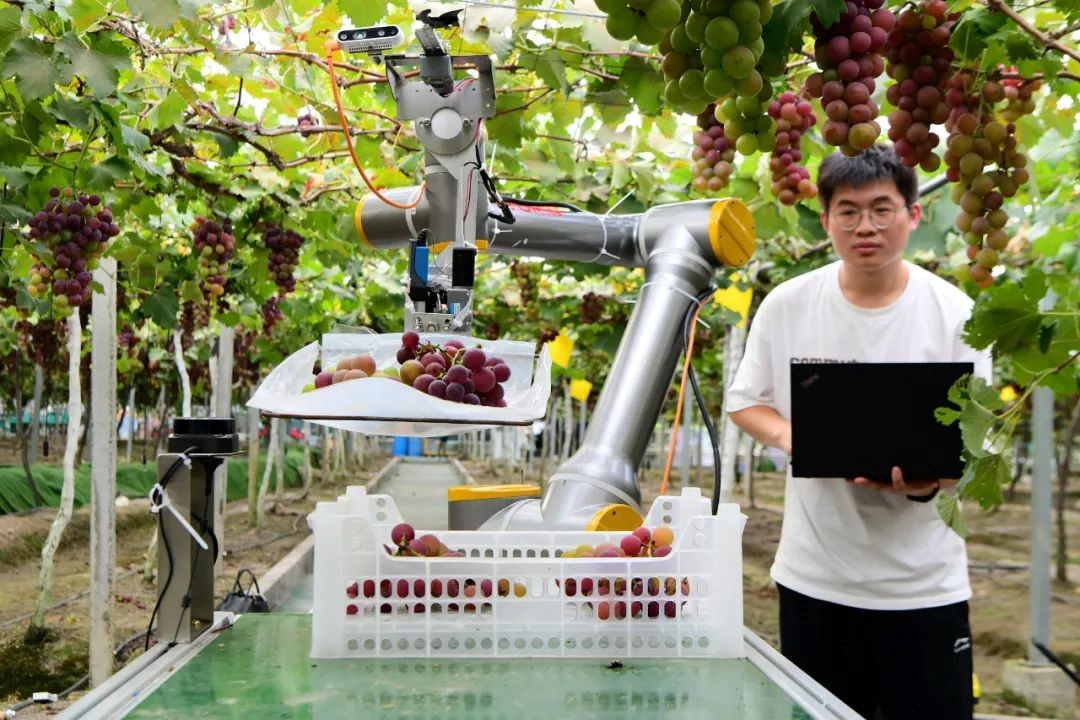Application scenarios of robots continue to expand in China
The increasing prevalence of robots in China highlights the continuous expansion of their application scenarios and the country's rapid advancements in robotics technology.
Various types of robots attracted wide attention at the 19th Asian Games held in Hangzhou, east China's Zhejiang Province. During the event, robot dogs performed dances and transported discuses; intelligent service robots acted as "tour guides" inside venues; robots working at the Hangzhou Asian Games Village played ping-pong with and played piano for athletes.

Photo shows the workshop of SIASUN Robot and Automation Co., Ltd. based in Shenyang, northeast China's Liaoning Province. (Photo/Li Jin)
With robots being extensively used in increasingly diverse and complex ways across different sectors in China, relevant application scenarios have already covered 65 major industry categories and 206 medium industry categories. Meanwhile, the country's density of manufacturing robots has reached 392 units per 10,000 workers.
Robots are playing important roles in traditional industries and emerging industries, as well as in public wellbeing-related areas and major projects in China. Their 10 major application scenarios include manufacturing, agriculture, construction, energy, commerce and trade logistics, health care, elderly care, education, commercial services for communities, security and emergency response, as well as extreme environments, said an action plan on the use of robotics jointly issued by China's Ministry of Industry and Information Technology (MIIT) and 16 other government departments.

Photo shows a collaborative robot. (Photo/CCTV News)
In manufacturing, companies are using robots to produce robots; in agriculture, fruit-picking robots help efficiently harvest crops; in the healthcare sector, robots provide personalized services for users; at charging stations, robots can automatically plug charging guns into electric vehicles and unplug them when the vehicles are fully charged.
At the World Robot Conference 2023, humanoid robots with the appearance of Chinese Tang Dynasty (618-907) poets Li Bai and Du Fu recited poems, wowing visitors because of their quick wit and vivid expressions. Various other types of humanoid robots, such as robot baristas, tactile-sensing robots and giant panda robots, also attracted great attention at the event.
The International Federation of Robotics predicted that the global humanoid robot market could reach 100 billion yuan ($13.9 billion) by 2030. A good number of Chinese companies have ramped up efforts to make breakthroughs in the research and development of humanoid robots.
To take a preemptive opportunity and promote the steady and sustainable development of the industry, China has established national innovation centers for humanoid robot-related software and hardware, including intelligent sensors and voice interaction.
The MIIT said China would release guidelines to promote the innovative development of humanoid robots, and leverage technological breakthroughs in general AI and industrial robot components to improve the capacity to supply key common technologies, and promote the implementation of important industrial applications.
Beijing, Shanghai and Shenzhen, among other cities across the country, have rolled out supportive measures for the development of humanoid robots.

A software engineer adjusts a smart fruit-picking robot at an orchard. (Photo/CCTV News)
Statistics showed that China's robotics industry brought in more than 170 billion yuan in operating revenue in 2022, maintaining double-digit growth. In the same year, China accounted for over 50 percent of global industrial robot installations, ranking first in the world.
In recent years, China has seen the continuous growth in the size of its industrial robot industry. The country has topped the world in the sales of industrial robots for multiple consecutive years. In the first half of 2023, the country's industrial robot output reached 222,000 sets, marking a year-on-year growth rate of 5.4 percent.
China has 273 "little giant" enterprises that use special and sophisticated technologies to produce novel and unique products in the robotics industry, with 10 of them leading the way in certain fields of the manufacturing sector, according to data released by the MIIT.
Photos
Related Stories
- China-made robotic vehicle explores underside of Arctic ice
- China installs record number of industrial robots in 2022:IFR
- Xinjiang teenager shifts from sheep grazing to robot racing
- Over 800 projects from universities displayed at China Int'l Industry Fair
- Robots attract visitors during China Int'l Digital Economy Expo 2023 in Shijiazhuang
- So fun! How a robot plays Chinese chess
- Robots empower intelligent transformation of China's manufacturing industry
Copyright © 2023 People's Daily Online. All Rights Reserved.









